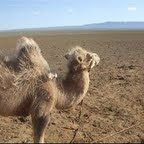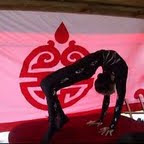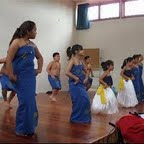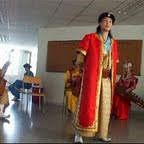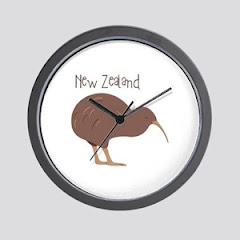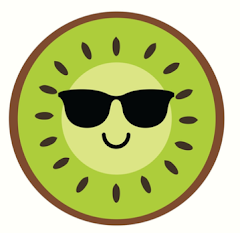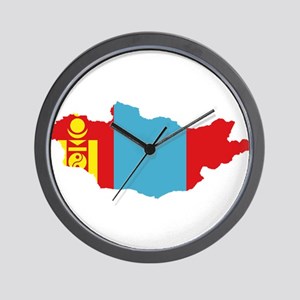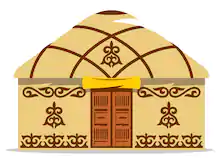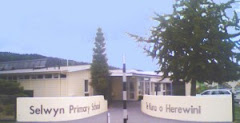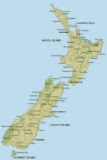
Before the Ger is Built
Today is my last day in Mongolia…. The 6 weeks have really flown by! I will highlight the events of the past week once again. Happy to report there were no broken down vans, but we were a little run down as we roughed it in the countryside!
I hope you have enjoyed the travel reports and I will post more links, classroom tools, photos, and videos for months to come.
Building a Ger
You really haven’t had the true Mongolian experience until you have built the ger you sleep in. I am happy to report, I have had that opportunity. For 2 days, we stayed out in the middle of the countryside with the mayor of Khotont and his family to get a glimpse of nomadic life. When we arrived, we were welcomed by the mayor and then led outside to assemble a ger. The Fulbright group did a pretty good job tying the walls together and connecting those to the door. We even did a fair job in connecting all the poles for the roof, but then we needed help putting on the layers of felt and canvas tied down correctly. I ended up sleeping in that ger through the wind and rain over the two days and I must say – it held together pretty well!
Anklebones (Shagai)
Being nomadic in the Mongolian countryside means being practical, compact, and resourceful. There are many, many games that are played using the anklebones of sheep. Even though you won’t see me returning with a bag of bones for my classroom, I will teach the games using other objects. Having the only stove at the time, all the Fulbrighters and all the Mongolian hosts piled into our ger (36 in all I think) to learn how to play the games. A bone has 4 sides: camel, horse, sheep, and goat. I can actually tell you the difference, if you want to know! :+) There are games similar to jacks and marbles as well as other ones called horserace and turtle. We also learned an alternative finger game to rock, paper, scissors – although around here it’s kind of a drinking game!
Horserace
The American Center for Mongolian Studies hosted a horserace in our honor outside of Khotont. All of the big races are held during the summer months with Naadam being the ultimate. I mentioned before my departure that the riders in these races are children under the age of 10 in most cases. That was the case in our race. Before the race, all the horses, children and their families gathered on a hillside. A finish line was marked on the dirt road and the horses were ridden to the starting line, which was about 20km away. We could see the racers on the top of a hill way in the distance before they started. Despite the hail storm, the race went on! The top 5 finishers were awarded the greatest honors, but the top 20 finishers were given prizes in our race. The race had about 50 from all over the province and all were 3 year old horses. The father of the 1st place winner traditionally sings a song and in this race he dedicated the race to the American teachers in his song!
Khorkhog
Being a vegetarian, I shouldn’t have been taking so many photos of this! Again, being nomadic means making use of what you have – including cookware. When we returned from the horserace we found a dead goat ready to be prepared in the traditional way. We were told it had been killed with a hammer to its head. First, this meant stringing the goat up by its hind legs to be skinned and then carved. The skin (with head attached) is then positioned over these long poles so that the goat can be re-filled with hot rocks, chunks of meat, and veggies for cooking. (We were told vegetarians were originally going to be served those vegetables.) A large stick is then used to stir it all up. Our hosts accidentally tore a hole in the skin that had to be repaired later. The goat is tied back up to seal it so the contents can cook. But wait – there’s more. The fur is pulled off as best it can and then the rest is blowtorched off. Set 40 minutes to cook and cut open to serve.
Hustai Nuruu Park
In the national park, we participated in a felt making session. Felt made from sheep’s wool is used a great deal in daily life from gers to slippers. Most of the felt is still made in this traditional way. First sticks are used to beat the wool clean. I can tell you from experience it’s not as easy as it looks. I had wool flying everywhere! The wool is then twisted and pulled into smaller pieces that are arranged on a tarp the size of a large carpet. The wool is watered and then covered with damp sheets. The tarp is rolled on a large wooden cylinder and wrapped in horse hide. The roll is then “blessed” with airag (as is the horse and rider), and then the roll is dragged behind the horse for a distance to mat the material into felt!
After our session, we went in search of Takhi horses (also known as Przewalski’s horse). This is the last known truly wild breed of horse. It was nearly extinct a few decades back, but due to careful breeding programs and reintroduction into protected areas, the numbers have grown to 260. We were lucky enough to find a small group grazing in the evening.
Mini-Naadam
Naadam is the large sporting and cultural event that takes place in July of each year where wrestling, archery, and horseracing are featured. Since we missed the event, a small version was re-created for us at Hotel Mongolia. It was fun to see the wrestling matches and the traditional outfits worn for the event. Imagine speedos, traditional pointed hats and short open vests. I have heard the open vests are to ensure women don’t join in the competition. Females can be archers or riders however! Despite the rain, we all had the chance to try our hand at archery. I will blame the weather for my poor performance :+) It was still fun to see if I could even get it in the air or half-way to the target. One day I’d like to return for the true Naadam event!
